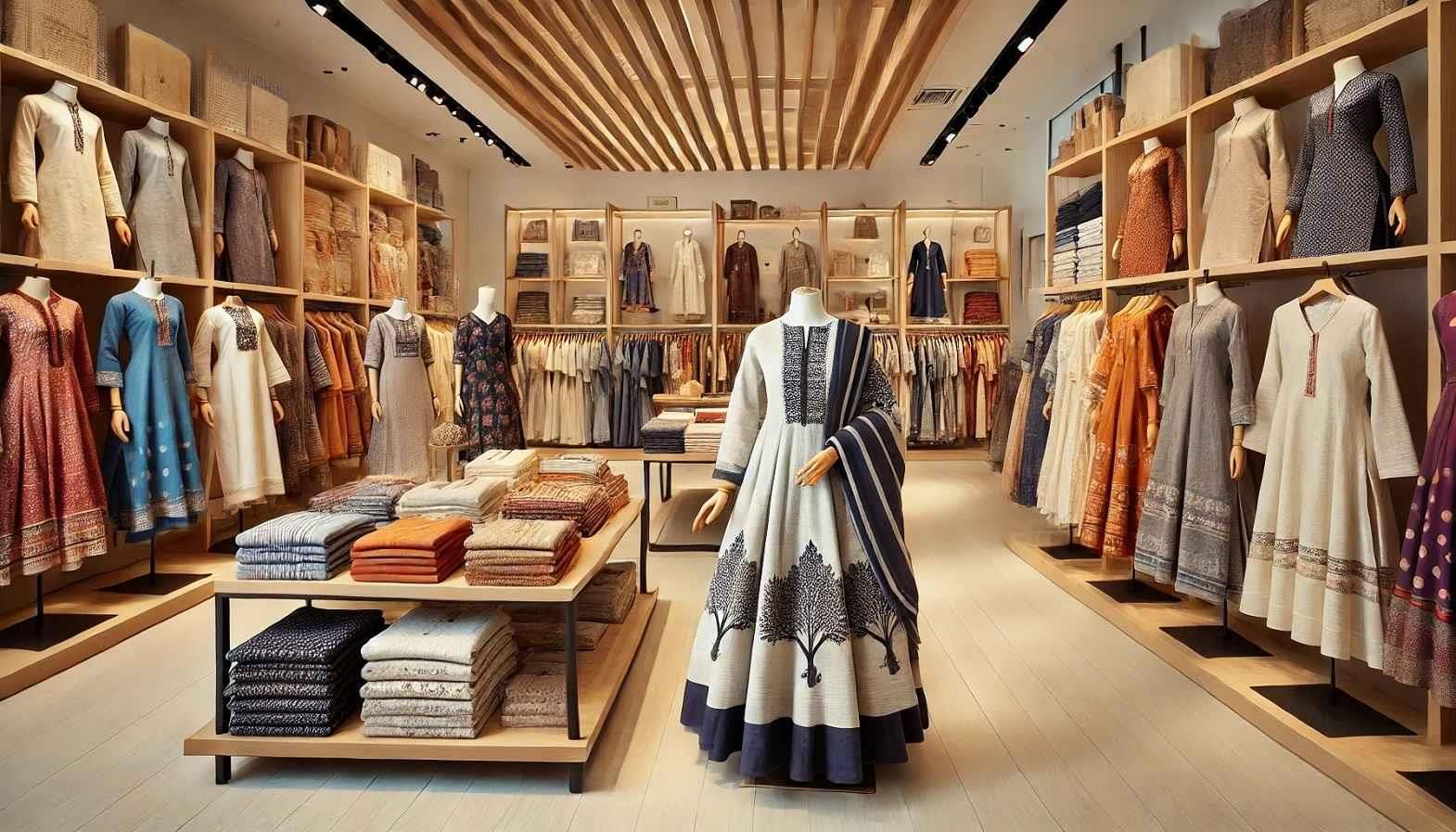Khadi, the handspun and handwoven fabric, has a deep historical significance in India. Today, Khadi is experiencing a revival, supported by government initiatives and popular movements. The fabric is now seen as a blend of tradition and modernity, appealing to a new generation that values sustainable and ethical fashion choices.
A Nine-Year Growth Story
Over the past nine years, Khadi has seen remarkable growth, marking a significant transformation in its economic impact. Khadi sales reached an all-time high, showing a substantial increase from ₹1,081 crores ($129.72 million) in 2013-14 to ₹5,708 crores ($684.96 million) in 2021-22. This surge in sales has been driven by government initiatives and an increased public interest in sustainable and locally made products.
The Khadi and Village Industries Commission (KVIC) has played a pivotal role in this growth, implementing various schemes to promote Khadi and enhance its market reach. For instance, the 'Khadi Gramodyog Vikas Yojana' has been instrumental in boosting production and sales. Additionally, the Prime Minister’s Employment Generation Programme (PMEGP) has provided significant support for setting up Khadi units, leading to job creation in rural areas.
Khadi production also witnessed a notable increase. The output of Khadi fabric surged from 103.32 million square meters in 2013-14 to 258.58 million square meters in 2021-22. This growth in production not only highlights the rising demand for Khadi but also underscores the sector's capacity to scale up and meet market needs.
A Catalyst for Rural Employment and Sustainable Development in India
Khadi plays a crucial role in promoting rural employment and sustainability in India. According to the Press Information Bureau, the number of Khadi artisans has grown from 11.04 lakh in 2013-14 to 15.44 lakh in 2021-22, illustrating its impact on rural employment. The Khadi sector has become a lifeline for many rural families, providing steady income and reducing migration to urban areas.
Besides boosting employment khadi production is inherently sustainable, relying on eco-friendly processes. The use of natural fibres and traditional hand-spinning and hand-weaving techniques results in minimal environmental impact. Khadi’s organic and chemical-free nature appeals to environmentally conscious consumers, aligning with global sustainability trends.
Khadi's role in sustainability extends to its support for organic cotton farming, which reduces the reliance on harmful pesticides and promotes soil health. By fostering sustainable agricultural practices and providing a market for organically grown cotton, Khadi contributes to the overall ecological balance.
The Khadi sector's focus on sustainability and rural employment has not only preserved traditional crafts but also provided a robust framework for economic development in rural India. This dual impact underscores Khadi's significance as both a cultural heritage and a modern, sustainable industry.
Sustainable Fabric with Global Appeal
Khadi's rise in the global fashion industry highlights its appeal as a sustainable fabric. The natural, organic production of Khadi, involving minimal chemical use and energy, makes it an eco-friendly choice.
The fabric's versatility and unique texture have attracted global fashion designers and brands, who incorporate Khadi into their collections to meet the growing demand for sustainable and ethical fashion. Initiatives such as the 'Khadi Goes Global' campaign have further boosted Khadi's international presence.
Khadi has seen a transformation in design, with contemporary aesthetics being integrated into traditional patterns. Designers are experimenting with new dyeing techniques, prints, and fabric blends, such as incorporating silk and wool, to create a diverse range of Khadi products. This fusion of traditional and modern elements has broadened Khadi's appeal, attracting younger and more fashion-forward consumers.
The resurgence of Khadi is not limited to everyday wear; it is also making significant inroads into the world of bridal fashion. "As a bridal designer, I keep thinking ‘what’s next?’ and I keep coming back to Khadi and organdy. Again and again. It is sophisticated, cultural, and powerful. For me, Khadi and organdy are equivalent to wellness, and nothing can be more luxurious than that," shares renowned bridal designer, Sabyasachi Mukherjee.
In 2020, Khadi's export earnings saw a notable increase, reinforcing its global market penetration. The KVIC reported that Khadi's export revenue grew from ₹1.95 crore ($234,000) and ₹2.65 crore ($318,000) in 2019-20, indicating a rising global interest in this traditional Indian fabric. This growth is driven by Khadi's alignment with contemporary sustainability trends and its reputation as a high-quality, eco-friendly textile.
Khadi's popularity in the global fashion industry not only supports sustainable practices but also promotes the rich cultural heritage of India. The fabric's journey from Mahatma Gandhi's Swadeshi movement to international fashion runways exemplifies its enduring relevance and potential to contribute to a more sustainable and ethical fashion future.
Technological and Design Innovations
Technological innovations have streamlined Khadi production, enhancing efficiency and quality. The introduction of modern spinning and weaving techniques has allowed for finer and more consistent fabric, making Khadi more appealing to a broader audience. These advancements have also helped in reducing the manual labour involved, making the production process less strenuous for artisans.
Effective marketing strategies have played a crucial role in Khadi's resurgence. Branding efforts, such as the 'Khadi Goes Global' campaign, have positioned Khadi as a high-quality, sustainable fabric in both domestic and international markets. Collaborations with fashion designers and global brands have further elevated Khadi's profile, showcasing its versatility and elegance on prestigious platforms.
Innovations in Khadi are also aligned with the growing global emphasis on sustainability. The use of organic cotton, natural dyes, and eco-friendly production processes highlights Khadi's commitment to environmental stewardship. This focus on sustainability not only preserves traditional practices but also meets the modern consumer's demand for ethically produced clothing.
The Future of Khadi: Challenges and Opportunities
The future of Khadi is filled with both challenges and opportunities. While the demand for sustainable and ethical fashion presents a significant growth opportunity, the sector faces challenges such as market competition and the need for scalability. Addressing these challenges requires continuous innovation, strategic marketing, and robust support from government and private sectors. By capitalising on its rich heritage and aligning with contemporary values, Khadi has the potential to thrive and expand its reach both domestically and internationally.








Comments